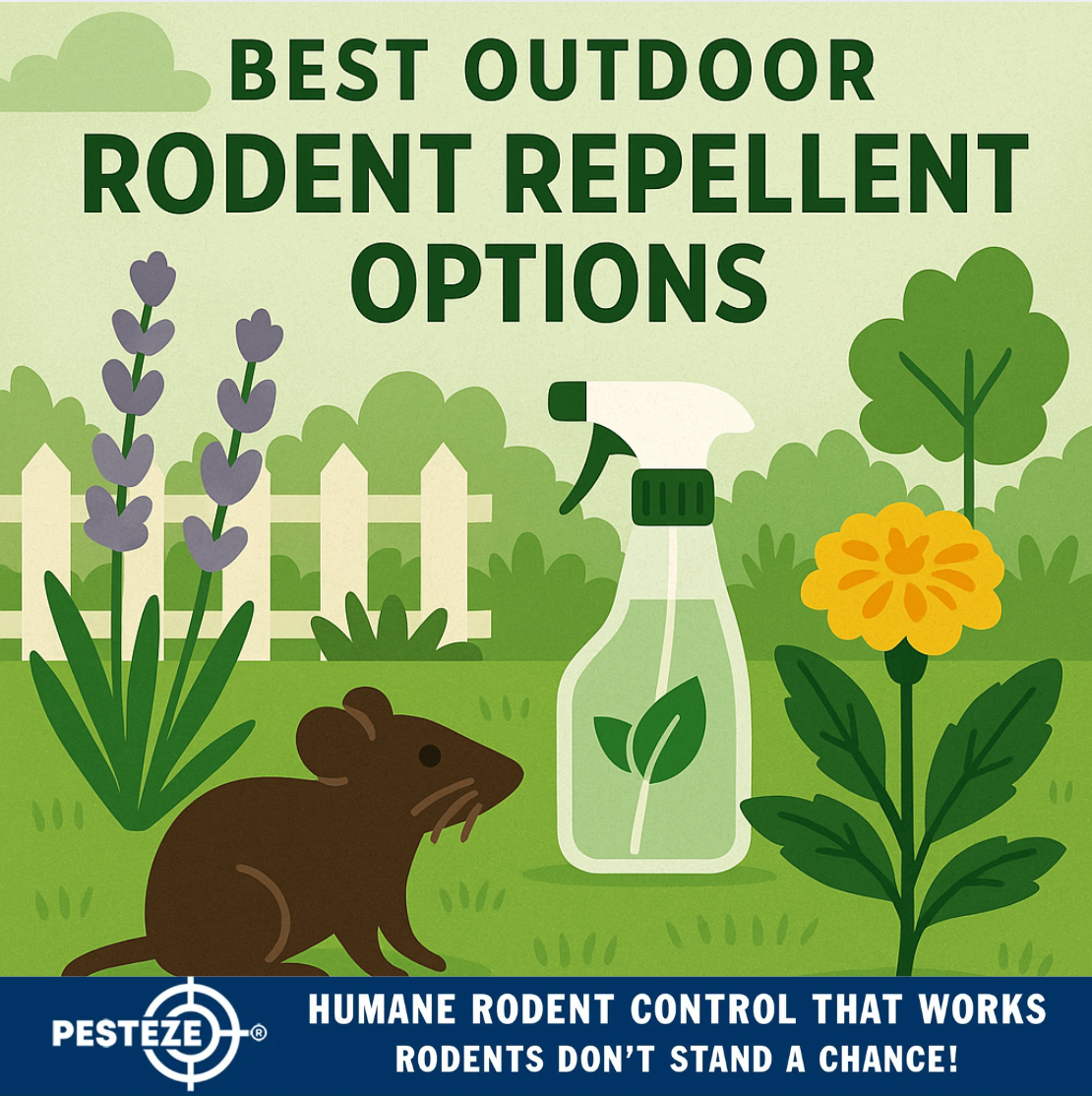BEST OUTDOOR RODENT REPELLENT OPTIONS

BEST OUTDOOR RODENT REPELLENT OPTIONS
SUMMARY
Outdoor rodent control is all about using safe, effective repellents to keep unwelcome guests away without resorting to harmful chemicals. This guide outlines top natural deterrents, strategic planting, ultrasonic devices, and more to safeguard your property humanely.
FEATURES
-
Essential Oil Scents: Use peppermint, eucalyptus, citronella, or lavender to deter rodents.
-
Repellent Plants: Plant mint, marigolds, lavender, or daffodils around your yard and entry points.
-
Predator Cues: Apply predator urine or install sachets with balsam fir oil for scent-based deterrence.
-
Ultrasonic Devices: Deploy high-frequency sound emitters that make outdoor areas uncomfortable for rodents.
-
Habitat Management: Keep landscapes clean—remove debris, secure trash, eliminate hidden nesting spots.
-
Integrated Pest Management (IPM): Combine repellents with exclusion, sanitation, habitat adjustment, and traps for long-term control.
DESCRIPTION
Controlling rodents outdoors effectively requires a combination of scent deterrents, environmental adjustments, and strategic prevention—without relying on harsh chemicals. One of the most approachable methods is using essential oils. Oils like peppermint, eucalyptus, citronella, and lavender emit strong aromas that rodents find offensive. Typically applied via cotton balls or sprays, these should be refreshed frequently to maintain potency.
Repellent plants also serve dual purposes: beautifying your garden while acting as natural deterrents. Mint, marigolds, lavender, and daffodils are known to keep rodents at bay when planted strategically around fences, beds, and foundation edges.
Another method leverages predator cues—rodents are repelled by the presence of predator scents. Options include predator urine or scented pouches loaded with balsam fir oil to mimic a natural threat.
Ultrasonic devices are increasingly popular, emitting high-frequency sound waves that rodents find disruptive, though not noticeable by humans. These work best when combined with other methods, as rodents may adapt over time.
Habitat management is foundational: rodents seek food and hiding spots, so clear away yard debris, secure trash bins, and remove potential shelters like wood piles or dense vegetation.
For long-term effectiveness, embrace Integrated Pest Management (IPM)—a holistic strategy that includes inspection, prevention, habitat alteration, repellents, and traps. This comprehensive method minimizes reliance on chemicals and targets root causes.
Recent expert recommendations also endorse sprinkling dried mint around gardens, near compost areas, or entry points. It’s cost-effective, eco-friendly, and non-toxic, though it works best when paired with other preventative measures like sealing entry points and reducing clutter.
By combining essential oil treatments, repellent plants, predator cues, ultrasonic devices, and habitat optimization under an IPM framework, you can create a robust outdoor barrier that protects your home from rodents sustainably and humanely.
- Saharsh Bansal


Comments 0